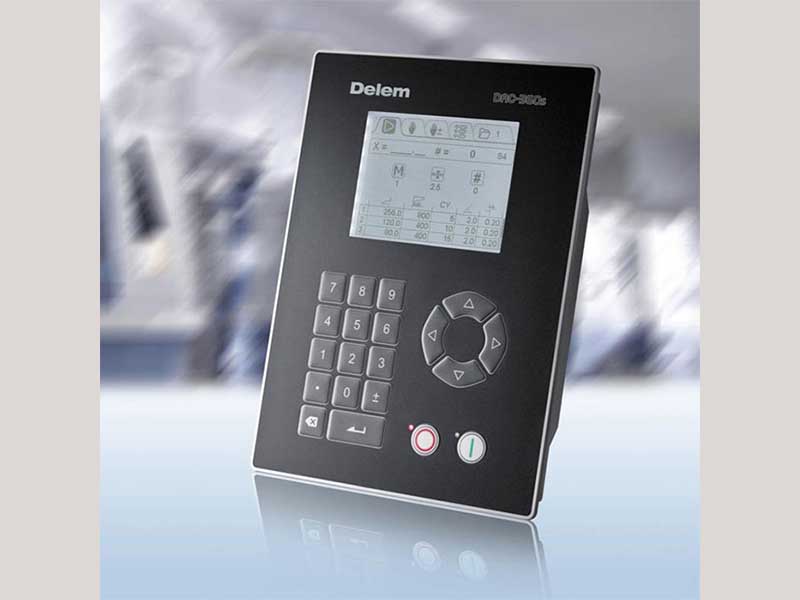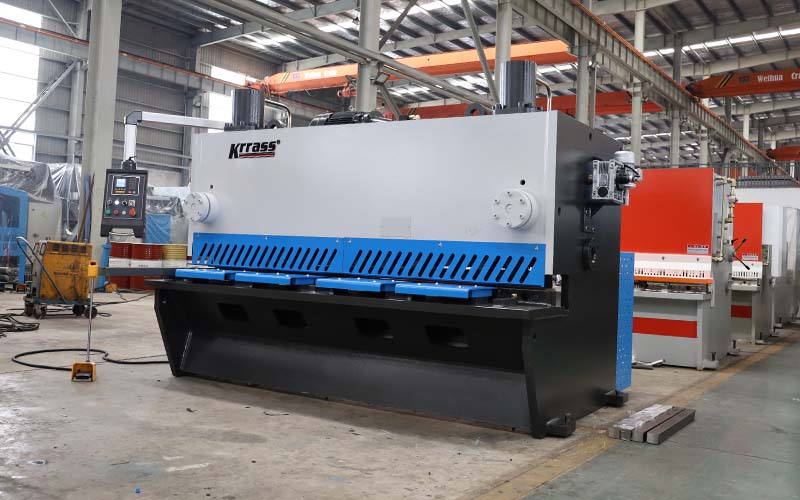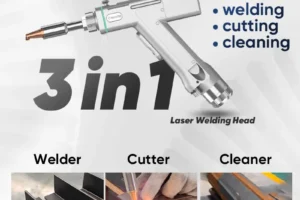The world of metal fabrication is unyielding without the right machinery. At the heart of precision cutting is the CNC Guillotine Shearing Machine, a marvel that transforms sheets of metal into finely cut pieces ready for creation. This guide illuminates the essence of guillotine shearing, diving into the functionality, configuration, and advanced usage of CNC Shearing Machines, empowering you to slice through metal with accuracy and efficiency.
- Basics of Guillotine Shearing Machines
- Setting up the CNC Control System
- Essential Configuration Settings
- Operational Guidelines
- Advanced Usage Tips
- Selecting the Right Guillotine Shearing Machine
Basics of Guillotine Shearing Machines
Guillotine Shearing Machines are the cornerstone of many metal fabrication shops, offering precision and efficiency in cutting a variety of metals. Understanding the fundamentals of these machines is the first step towards mastering the art of metal shearing. Let's delve into the working principle, key components, and the different types of Guillotine Shearing Machines to equip you with the knowledge required to operate them proficiently.
Working Principle of Guillotine Shearing Machines:
At the core of a Guillotine Shearing Machine is a straightforward principle: applying a significant force to shear or cut metal sheets. The machine’s blade descends across a fixed edge with ample force to cut the metal to the desired size and shape. The precision and control of the cutting process are enhanced by the integration of CNC (Computer Numerical Control) systems, allowing for meticulous adjustments and repeatability.
Key Components and Their Functions:
A Guillotine Shearing Machine comprises several key components, each playing a crucial role in its operation:
- Blade: The sharp edge responsible for cutting the metal.
- Ram: The component that drives the blade downward during the shearing process.
- Back Gauge: Helps in positioning the metal accurately for cutting.
- Hold-downs: Clamps that secure the material in place during cutting.
- Bed: The flat surface where the metal sheet is placed.
- Control System: Often a CNC system, allowing for precise control and programming of the cutting process.
Hydraulic vs. Mechanical Shearing Machines:
Guillotine Shearing Machines come in hydraulic and mechanical variants, each with its own set of advantages:
- Hydraulic Shearing Machines: Known for their power, precision, and ability to handle heavier workloads with less noise and vibration.
- Mechanical Shearing Machines: Often faster and more cost-effective, suitable for lighter workloads and simpler operations.

Setting up the CNC Control System
In the journey of metamorphosing raw stainless steel into meticulously crafted products, the role of the CNC (Computer Numerical Control) system is pivotal. Setting up the CNC control system on a Guillotine Shearing Machine is a synthesis of precise calibration and keen understanding of the machine's mechanics and the task at hand. Here's a step-by-step guide on how to configure the CNC control system on your Guillotine Shearing Machine:
1. Understanding the Interface:
The first step towards configuring your CNC system is to familiarize yourself with the control interface. Explore the menu, settings, and control buttons to understand the basic operations that can be performed.
2. Inputting Material Specifications:
Input the specifications of the material to be sheared such as its thickness, type, and size into the CNC system. This data is crucial for the system to determine the required force and shearing angle.
3. Setting Shearing Parameters:
Adjust the shearing parameters such as blade gap, cutting angle, and stroke length in accordance to the material specifications. A smaller blade gap and a larger cutting angle are preferable for cutting thicker materials.
4. Programming the Cutting Sequence:
Program the cutting sequence based on the design requirements. Utilize the CNC system to input the coordinates and cutting paths to ensure precise cuts.
5. Test Runs:
Before proceeding with the actual cutting, it’s advisable to conduct test runs to ascertain the accuracy of the settings. Make any necessary adjustments to ensure the shearing process is optimized for accuracy and efficiency.
6. Monitoring and Adjusting:
Once the cutting process commences, monitor the operations closely. Utilize the CNC control system to make real-time adjustments as needed to ensure the desired output is achieved.
The synergy between a well-configured CNC system and a Guillotine Shearing Machine’s mechanical precision lays the foundation for achieving cutting excellence. It's a blend of technology and mechanical prowess that propels the manufacturing process into a realm of higher precision and efficiency.

Essential Configuration Settings
Mastering the operation of a Guillotine Shearing Machine demands a meticulous approach towards configuring the essential settings. The triumvirate of shearing angle, back gauge, and blade clearance are the linchpins that govern the quality of the shearing process. Let’s delve into how to adjust these crucial settings to ensure optimal performance of your Guillotine Shearing Machine:
Adjusting the Shearing Angle of the Blade:
The shearing angle is paramount as it impacts the force required and the quality of the cut. A smaller shearing angle is ideal for thinner materials, reducing the amount of force needed, while a larger angle is conducive for shearing thicker materials. Here's how to adjust it:
- Access the control panel of your CNC Guillotine Shearing Machine.
- Navigate to the shearing angle settings.
- Adjust the angle as per the material specifications and desired output.
- Save the settings and run a test cut to verify the adjustments.
Adjustment of the Back Gauge:
The back gauge positions the workpiece for accurate cuts. Here's a step-by-step guide on how to adjust the back gauge:
- Ensure the machine is turned off before making adjustments.
- Loosen the locking mechanism of the back gauge.
- Manually move the back gauge to the desired position or use the CNC control system to set the position.
- Tighten the locking mechanism to secure the back gauge in place.
- Verify the position by running a test cut.
Adjustment of the Clearance Between Blades:
The clearance between the blades is crucial for achieving clean cuts. Too much clearance could lead to rough cuts, while too little could cause blade damage. Here’s how to adjust the clearance:
- Turn off the machine and ensure it's safe to make adjustments.
- Loosen the bolts securing the blades.
- Adjust the blades to achieve the desired clearance.
- Tighten the bolts to secure the blades in place.
- Run a test cut to ensure the clearance is set correctly.
These configuration settings are quintessential in harnessing the full potential of your CNC Guillotine Shearing Machine. A precise calibration of the shearing angle, back gauge, and blade clearance will not only ensure the quality of the cuts but will significantly enhance the operational efficiency and longevity of the machine.

Operational Guidelines
Operating a CNC Guillotine Shearing Machine efficiently requires adherence to certain guidelines that ensure not only the quality of output but also the safety of the operators. Let’s delve into the pre-operation checklist, operating procedures, and the safety measures that are imperative to adhere to.
Pre-operation Checklist:
Before diving into the operation, it’s prudent to perform a thorough check to ensure the machine is in a sound operational state. Here’s a checklist to guide you through:
- Inspect the blades for sharpness and integrity.
- Ensure all safety guards and devices are in place and functioning correctly.
- Check the hydraulic system for any leaks or abnormalities.
- Verify the correct alignment and clearance between blades.
- Ensure the back gauge is functioning and calibrated accurately.
- Check the electrical connections for any loose wiring or malfunctions.
Operating Procedures:
Following the correct operating procedures is the linchpin for achieving precision and efficiency. Here’s a step-by-step guide to operating the CNC Guillotine Shearing Machine:
- Power on the machine and allow it to warm up to its operating temperature.
- Load the material onto the machine, ensuring it’s properly aligned with the back gauge.
- Input the necessary cutting parameters into the CNC control system.
- Engage the machine and monitor the cutting process, making any necessary adjustments in real-time.
- Once the cutting is complete, power down the machine and remove the workpiece.
Safety Measures to Adhere To:
Safety is paramount when operating machinery of this caliber. Adhering to safety measures not only protects the operator but also ensures the longevity of the machine. Here are the key safety measures to adhere to:
- Always wear appropriate personal protective equipment such as gloves and eye protection.
- Ensure the work area is clean, organized, and free from any obstructions.
- Stay clear of moving parts during operation and keep hands away from the blades.
- Follow the manufacturer’s guidelines for maintenance and operation.
- Ensure only trained and authorized personnel operate the CNC Guillotine Shearing Machine.
- Adhere to the local and federal safety regulations governing the operation of shearing machines.
Advanced Usage Tips
As with any sophisticated machinery, mastering the advanced usage techniques of a CNC Guillotine Shearing Machine can significantly enhance operational efficiency and the quality of the end product. This section delves into the maintenance practices, troubleshooting common issues, and optimization strategies that can be employed to achieve a high degree of efficiency and accuracy in your shearing operations.
Maintenance of Blades and Other Components:
Regular maintenance is the cornerstone of ensuring the longevity and effectiveness of your Guillotine Shearing Machine. Here are some maintenance tips:
- Regularly inspect and sharpen the blades to ensure clean cuts and reduce the load on the machine.
- Lubricate moving parts as per the manufacturer’s guidelines to reduce wear and tear.
- Clean the machine thoroughly to remove any debris that could interfere with its operation.
- Inspect hydraulic and electrical systems for any signs of wear, leakage, or malfunction.
- Adhere to a regular maintenance schedule as recommended by the manufacturer.
Troubleshooting Common Issues:
Encountering issues during operations is common, but knowing how to troubleshoot them promptly is crucial. Here are some common issues and troubleshooting tips:
- If cuts are not clean or precise, inspect the blades for sharpness and proper alignment.
- For inconsistent cutting angles, check the shearing angle settings and back gauge positioning.
- If the machine operates erratically, inspect the hydraulic and electrical systems for faults.
- Always refer to the machine’s manual for troubleshooting guidelines and technical support.
Optimizing for Efficiency and Accuracy:
Optimization is the key to achieving operational excellence. Here are some tips for optimizing the operation of your CNC Guillotine Shearing Machine:
- Ensure correct input of material specifications and cutting parameters in the CNC system.
- Utilize the CNC system to its full potential by leveraging its programming capabilities for complex cutting sequences.
- Monitor the operation closely to make real-time adjustments as necessary.
- Train operators thoroughly on the advanced features and capabilities of the machine.
- Invest in regular maintenance to ensure the machine operates at its peak efficiency.

Selecting the Right Guillotine Shearing Machine
Investing in the right Guillotine Shearing Machine is a critical decision that impacts the efficiency, quality, and overall productivity of your metal fabrication processes. Several factors need to be considered to ensure that the machine you choose aligns well with your operational requirements and long-term goals. Here's a comprehensive guide to aid you in selecting the right Guillotine Shearing Machine for your needs:
1. Material Specifications:
The type, thickness, and size of materials you’ll be working with are paramount considerations. Ensure the machine you select can handle the material specifications of your projects.
2. Production Volume:
Evaluate the production volume you aim to achieve. High-volume production may necessitate a machine with faster cycle times and higher cutting speeds.
3. Cutting Precision:
If your projects require high precision, opt for a machine with advanced CNC control systems and high-quality blades to achieve precise cuts.
4. Ease of Operation:
Choose a machine with an intuitive control system, easy setup, and user-friendly interface to ensure ease of operation.
5. Maintenance and Support:
Opt for machines from manufacturers who provide robust support, maintenance services, and have a reputation for durability and reliability.
6. Budget and ROI:
Evaluate the cost against the benefits. Analyze the potential return on investment (ROI) by considering the machine’s efficiency, operational costs, and lifespan.
7. Brand Reputation:
Investing in a reputable brand can provide assurance of quality, performance, and after-sales service.
By meticulously evaluating these factors in alignment with your operational needs and long-term objectives, you can make an informed decision when selecting a Guillotine Shearing Machine. Remember, the right machine is an invaluable asset that can significantly enhance your production capabilities and contribute to the success of your metal fabrication endeavors.
Choosing the Best CNC Shearing Machine
The odyssey of metal crafting is incomplete without a reliable partner in precision cutting. Your choice of a CNC Shearing Machine significantly impacts the quality and efficiency of your work. Among the leading manufacturers in the domain, Krrass stands tall, epitomizing the zenith of innovation and reliability in CNC Shearing Machines. With a legacy of excellence, Krrass is not just a manufacturer; it's a hallmark of quality and precision in the realm of metal fabrication. Explore their extensive range of Guillotine Shearing Machines and elevate your metal fabrication projects to a realm of higher precision and efficiency.
Read More:
hydraulic guillotine shearing machine of Advantages
The working principle and cautions of Hydraulic Shearing Machine





